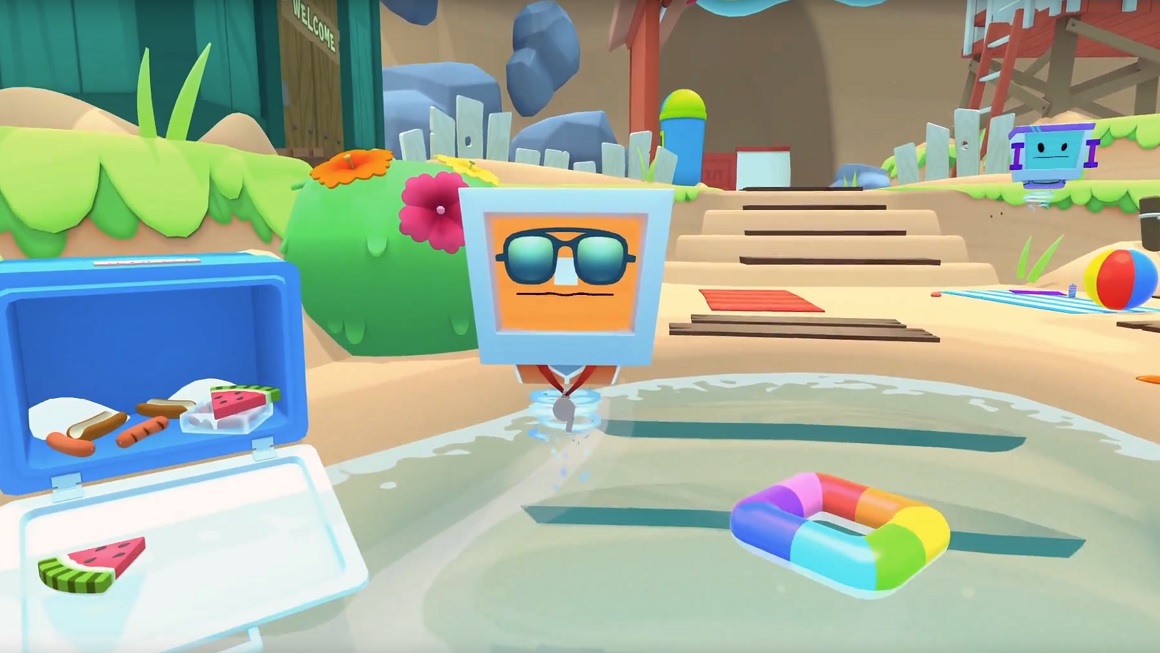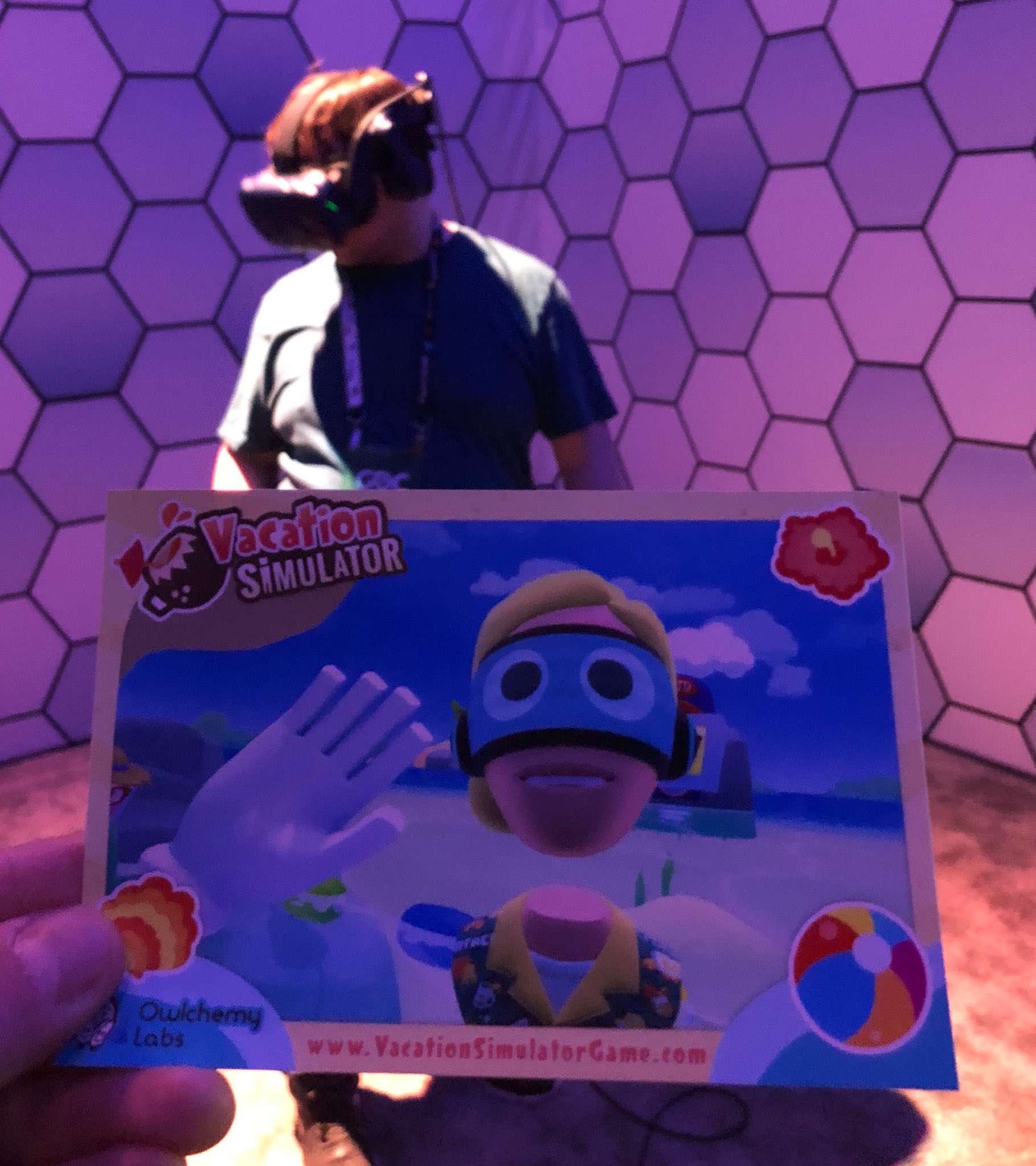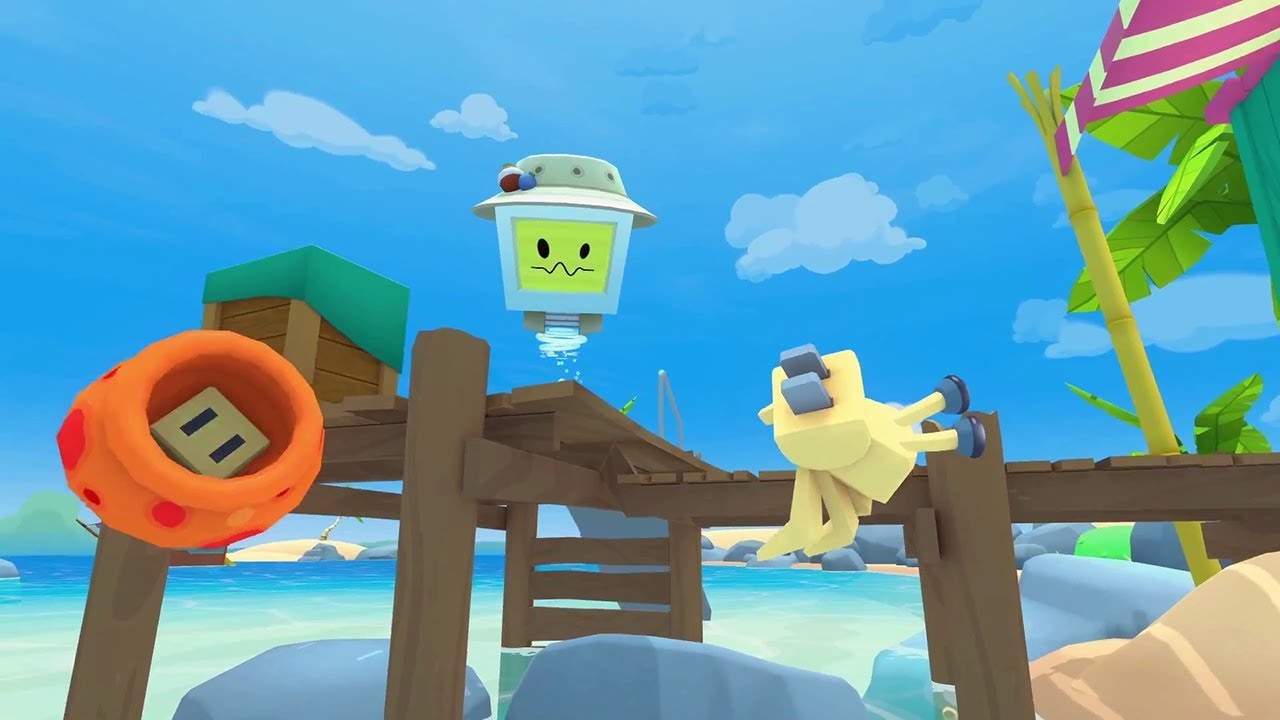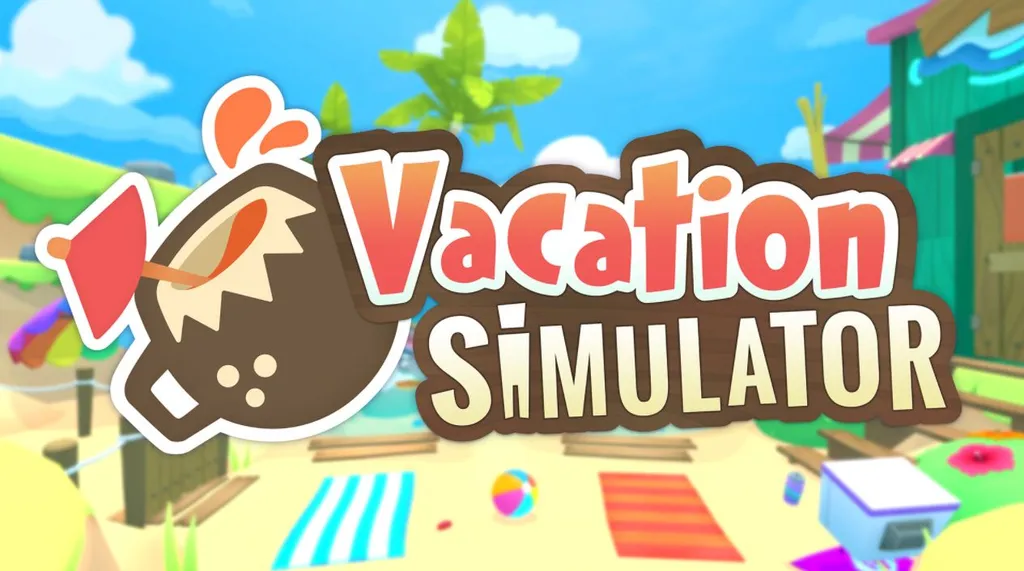It’s been almost two years since the Rift and Vive launched and to this day Job Simulator is still one of the first things I always stick new VR users in. The combination of a whimsical setting, with simple controls, and quirky gameplay makes it the perfect balance of engaging and accessible.
During the 2017 Game Awards show late last year, Owlchemy Labs officially announced Vacation Simulator as the follow-up to Rick and Morty VR and direct sequel to their smash-hit runaway success first VR game, Job Simulator. Since its original launch on HTC Vive, Job Simulator has been ported with great success to the Rift with Touch and PSVR. The team is gearing up for Vacation Simulator to be their first multiplatform release on all three major headsets.
My demo took place on the idyllic beach landscape shown in the trailer above and screenshots below. Quickly it’s apparent that Vacation Simulator is, by far, Owlchemy’s most ambitious title to date. Not only is the beach area more open and dynamic than any environment in Job Simulator or Rick and Morty, but it’s also packed full of new ways of interacting with the world.
For example, to start a dialog with an NPC I just wave my hand at them to get their attention. Because of how bright and colorful the visuals are, it’s nearly impossible to do without a smile on my face. My demo was on the upcoming Vive Pro headset, so everything was even crisper than I’m typically used to.
What strikes me as most impressive though with Vacation Simulator, as hinted earlier, is just how large and explorable the levels appear to be. Instead of being restricted to a single zone like the jobs in Job Simulator, the layout is more akin to Rick and Morty VR’s garage. There are different small zones, like a sand castle station, a pool beneath a waterfall, the beach shack, and a couple others that you can navigate to by pointing and clicking.

I was immediately drawn to the pool beneath the waterfall. Several floaties, a beach ball, and a soccer ball are all bobbing around me, reacting to the wave movements. On the sea floor beneath me I can spot some sand dollars, shells, and a few other objects. When I reach down and duck my head under water my vision starts to blur and the sound gets distorted, just as it would if you were actually underwater. When I reach behind my head on my back I can grab a backpack with an open inventory inside to store things like sand dollars for later use.
The zone behind me is a sand castle building station, which reminded me of beach vacation trips as a kid. While I don’t get to scoop the sand and compact it (that’d be awesome if that were a feature) I can place the individual block and components onto a board to try and replicate a specific design.
Over at the other pool of water near the beach shack there’s a bot that challenges me to a round of Sportball in which I must throw a soccer ball into the net behind him without it getting blocked. Inside the shack there’s a list of activities for me to try and complete, like taking a selfie in the water, which naturally piques my interest. At GDC, Owlchemy was even printing out the selfies people took for them to take with them:

Overall, Vacation Simulator is a much more robust sequel than I expected. To be perfectly frank, when I saw the announcement late last year I was getting a sense of burnout that this would just be more of the same. But luckily it seems that Owlchemy is iterating on the concept in some pretty interesting ways.
The developers told me that this is by far their largest game and it definitely shows. If it were just this beach environment I’d come away a bit underwhelmed, but as it turns out there are several multi-zone environments for you to relax and vacation with in the final release.

Vacation Simulator is slated for a release later this year in 2018 for PSVR, Oculus Rift, and HTC Vive. Let us know what you think of the robots’ next adventure down in the comments below!


























